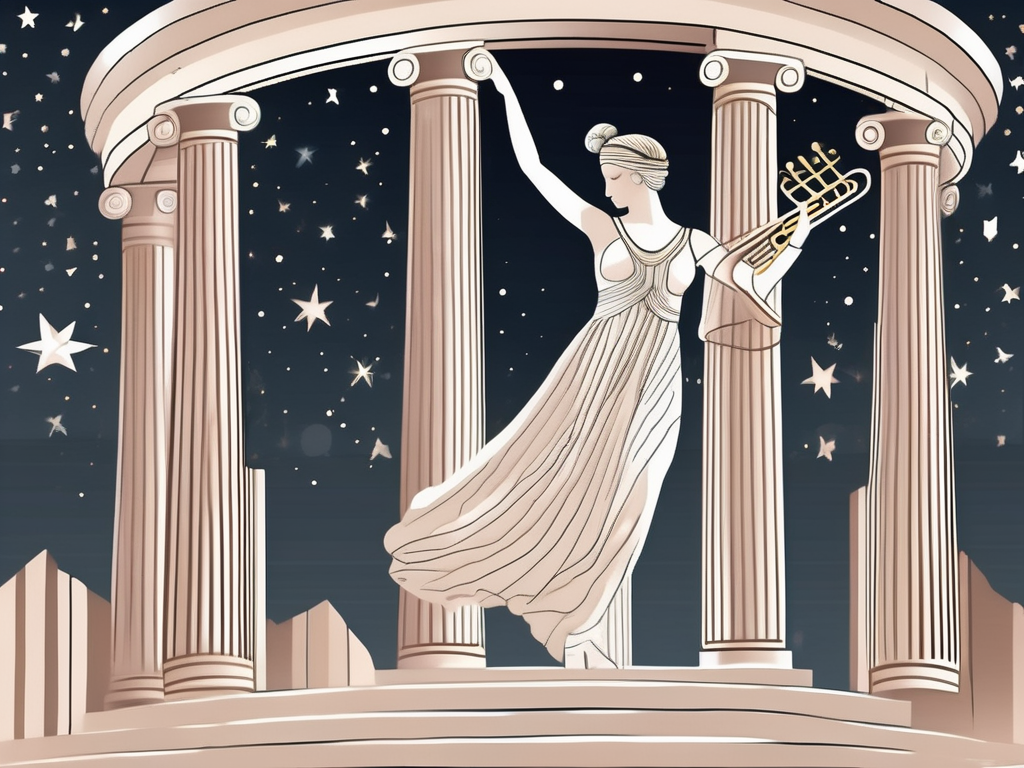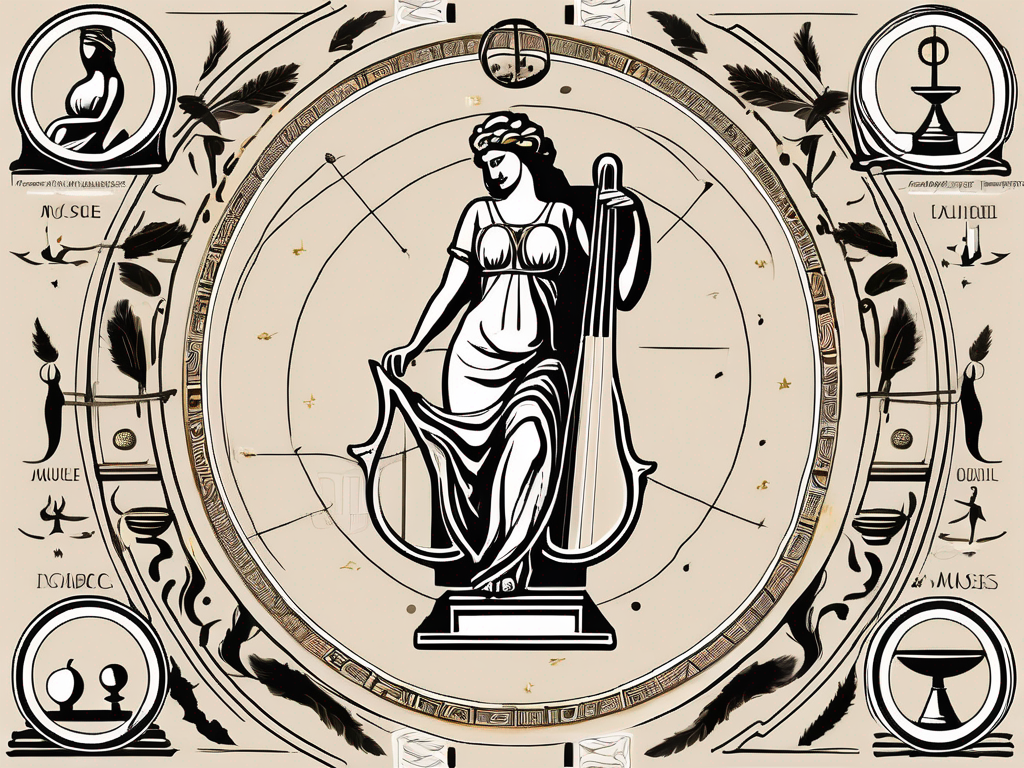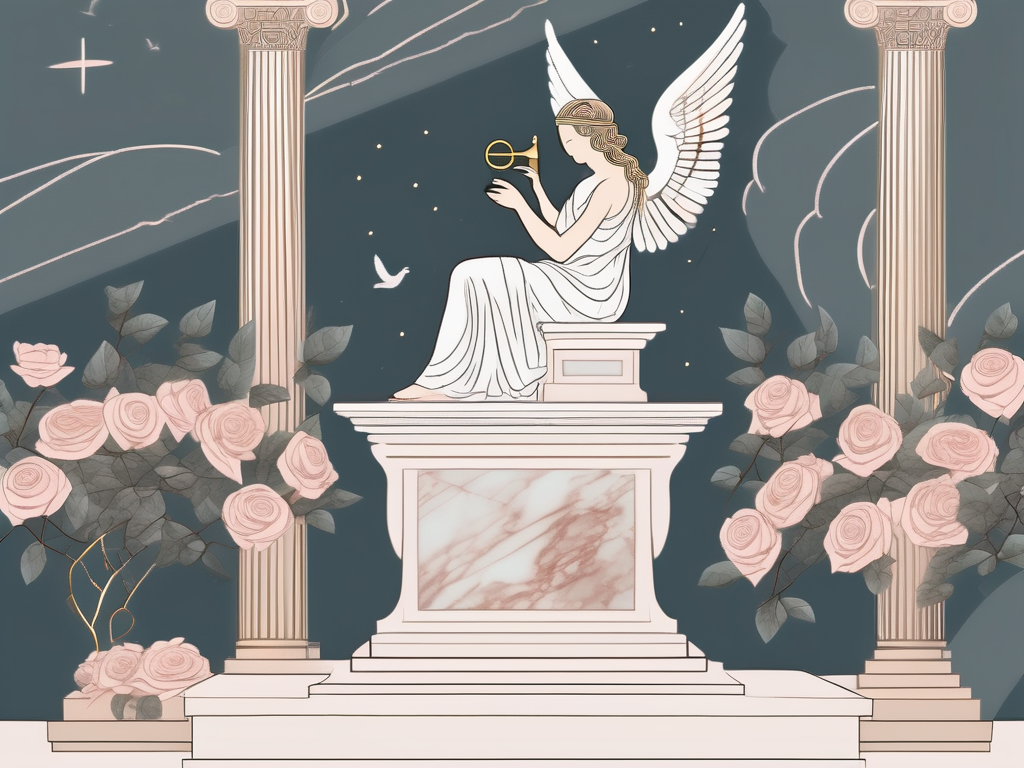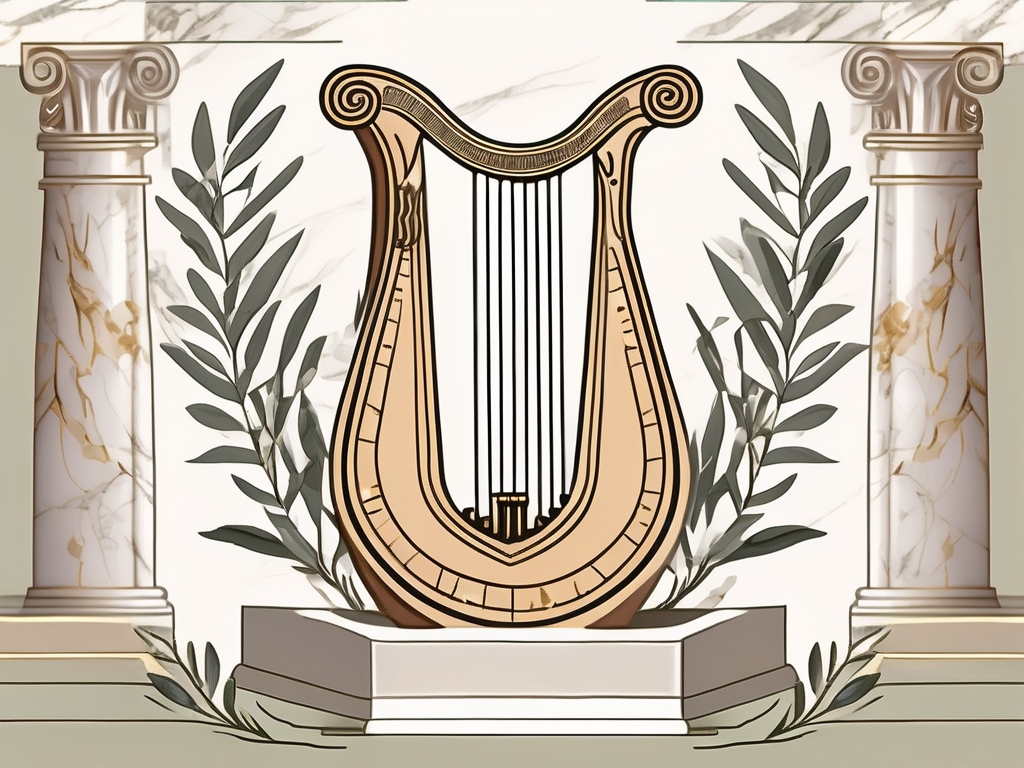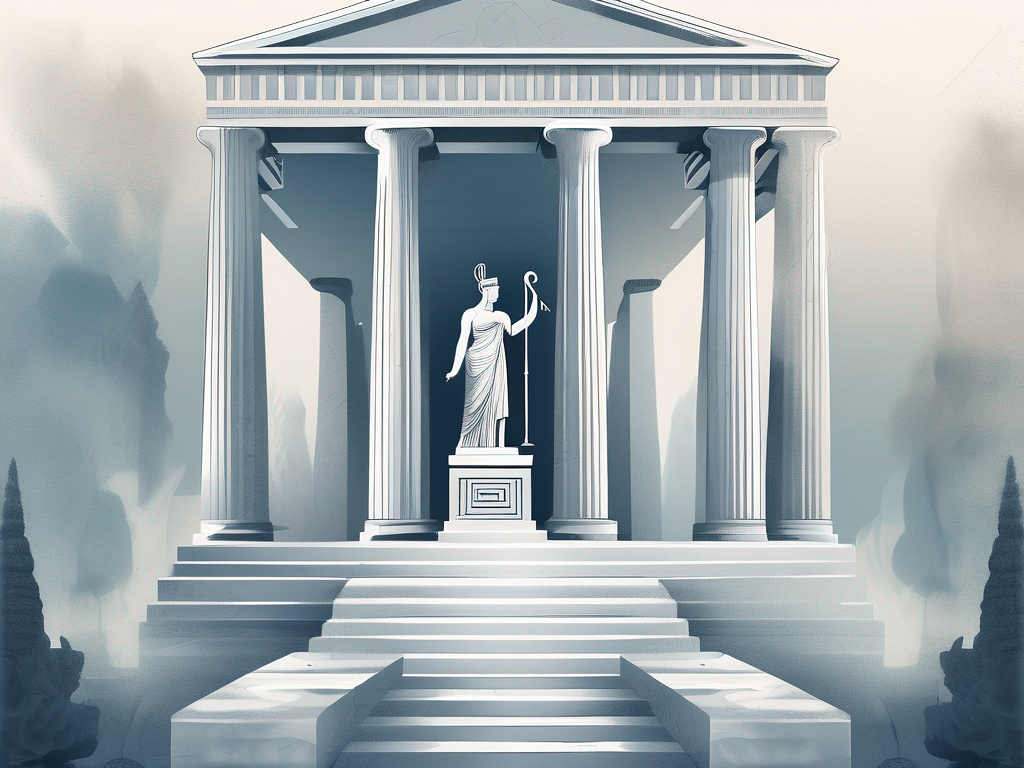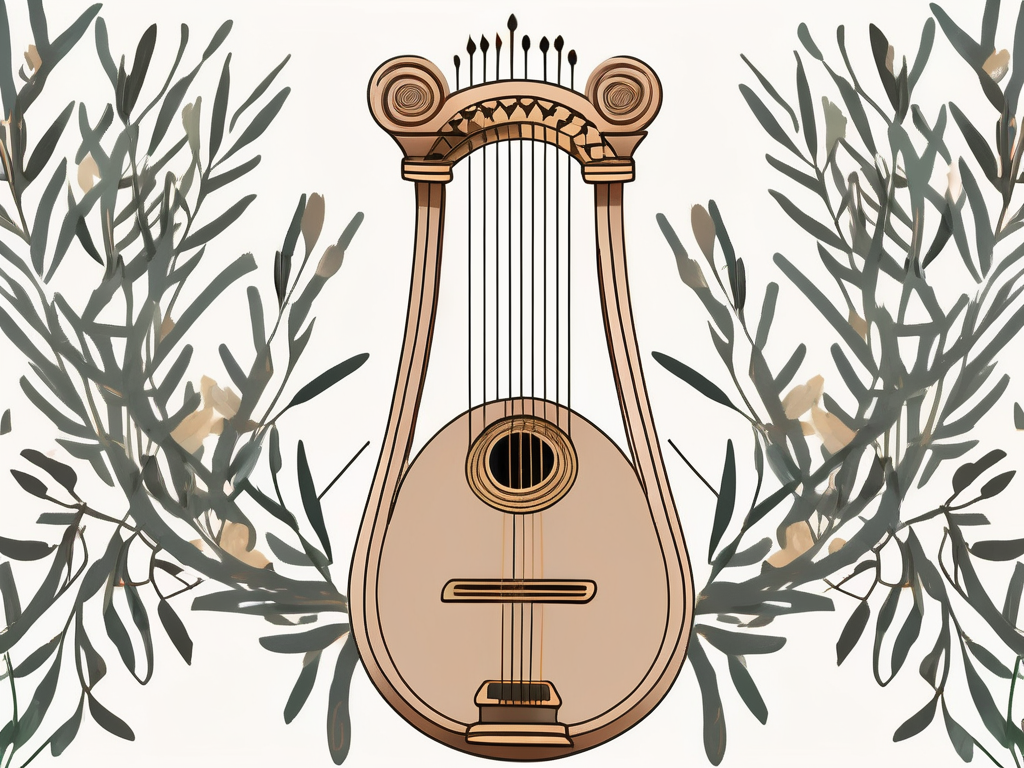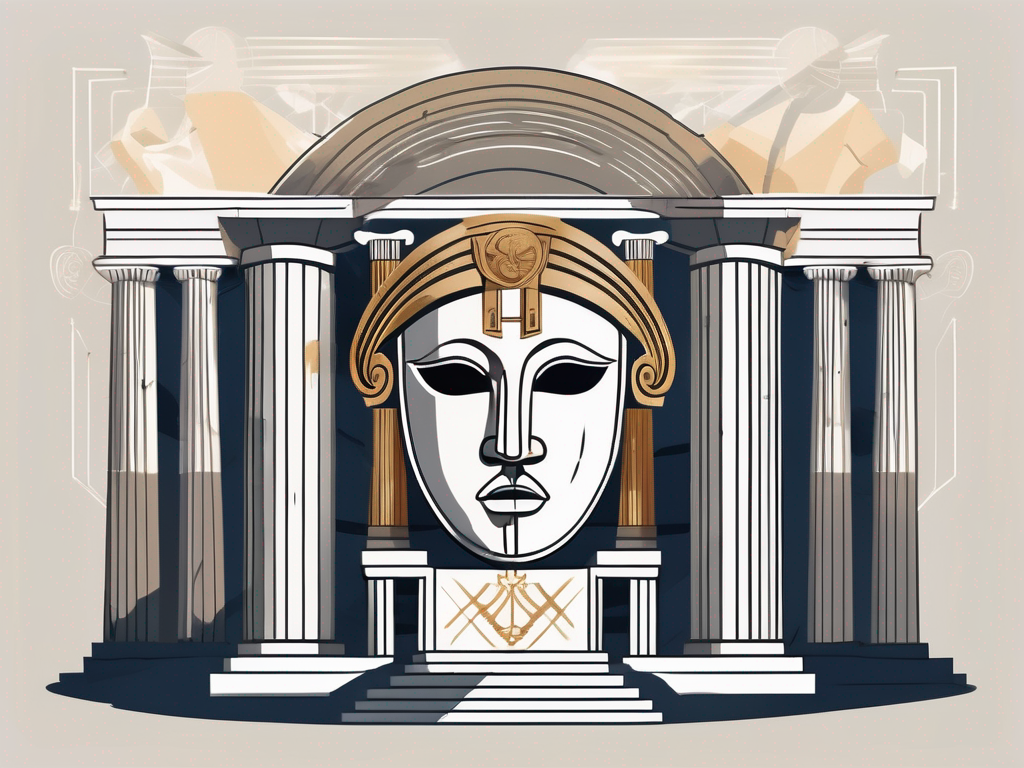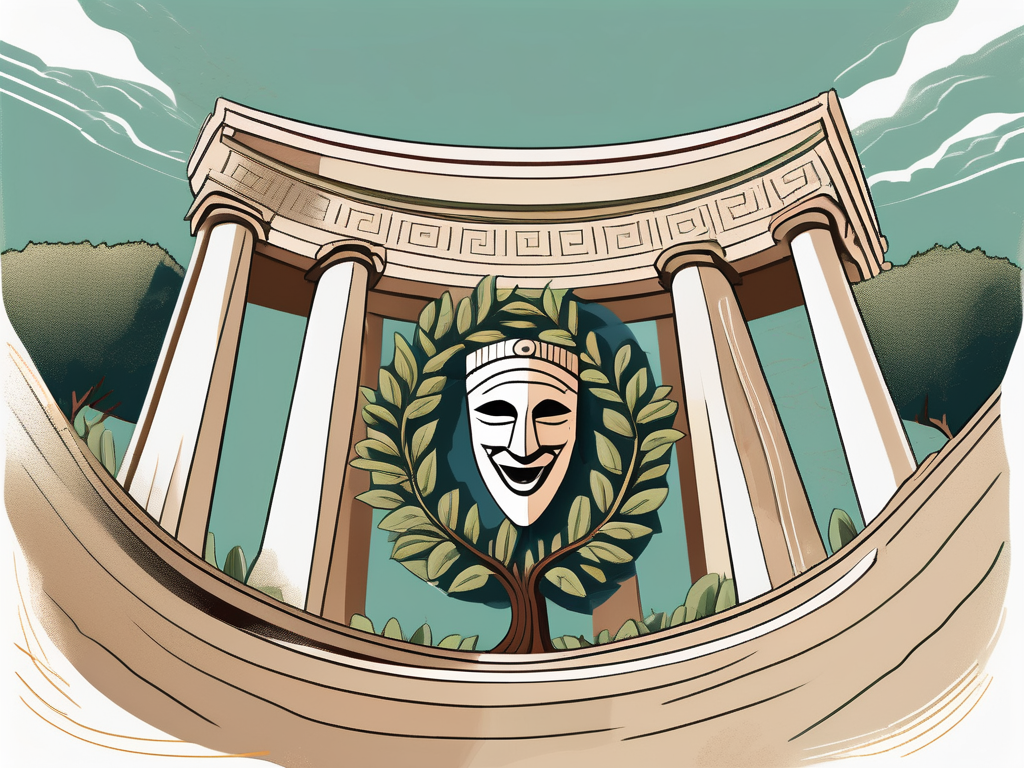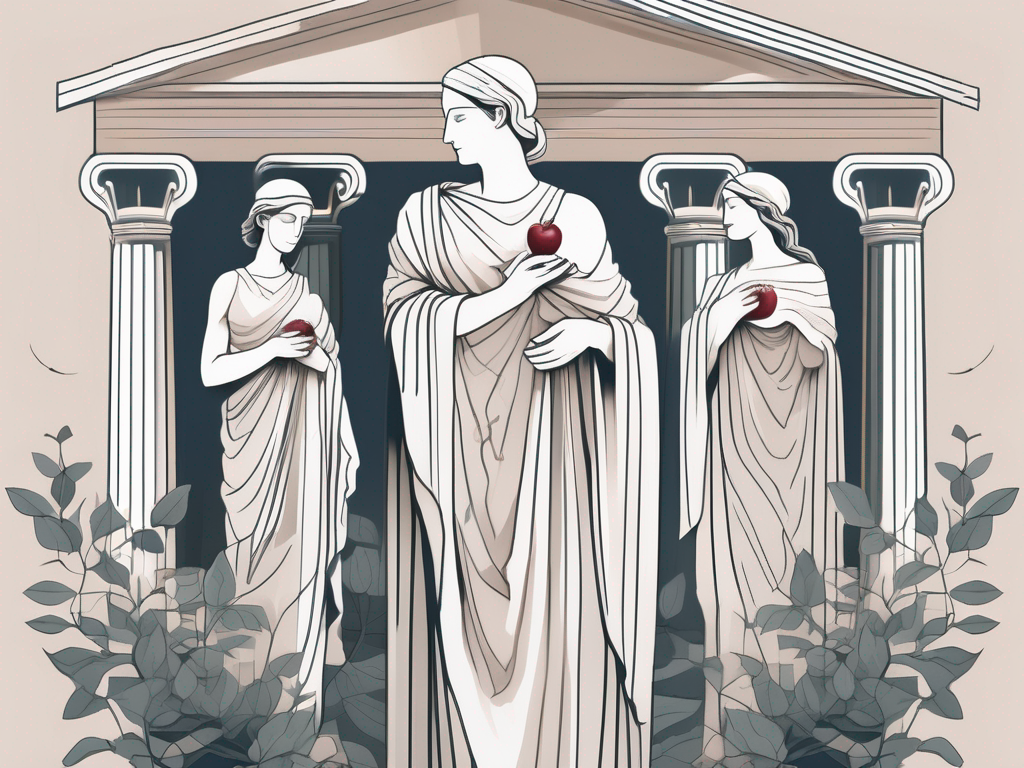In the vast pantheon of Greek gods and goddesses, Terpsichore stands out as the captivating muse of dance. Her name literally means “delighting in the dance,” and she embodies the fluidity, elegance, and grace that epitomize the art form. Let us delve into Terpsichore’s rich mythology and explore the profound influence she has had on dance and music throughout history.
Understanding Terpsichore’s Role in Greek Mythology
The origin of Terpsichore dates back to ancient Greek mythology. According to legend, she was one of the nine Muses, daughters of Zeus and Mnemosyne, the goddess of memory. These divine beings presided over various spheres of human creativity and inspired mortals to achieve greatness in arts, sciences, and literature. Terpsichore, in particular, ruled over dance, providing inspiration and guidance to musicians, choreographers, and dancers alike.
Terpsichore’s birth is rooted in the fruitful union between Zeus, the king of the gods, and Mnemosyne, the personification of memory. As a result of their divine coupling, the Muses graced the world with their enchanting presence, each representing a different facet of human expression. Terpsichore’s birth signifies the importance and magic of dance.
Terpsichore’s connection to her siblings, the other Muses, is undeniable. Together, they formed a harmonious sisterhood, each contributing their unique talents to the world of creativity. Terpsichore, with her graceful movements and rhythmic expertise, brought the gift of dance to humanity. Her sisters, in turn, inspired poets, artists, and scientists to reach new heights of imagination and innovation.
While Terpsichore’s bond with her fellow Muses was strong, she also had a special relationship with the god Apollo. Apollo, the god of music and poetry, was a close companion of Terpsichore, for their domains were intricately intertwined. Together, they championed the power of harmonious melodies and captivating movements, unlocking the full potential of dance.
Terpsichore’s influence extended beyond the realm of the gods and into the mortal world. She was revered by dancers and choreographers, who sought her guidance and inspiration. Her presence could be felt in the graceful leaps of ballerinas, the rhythmic beats of tap dancers, and the passionate movements of contemporary performers. Terpsichore’s divine essence infused every dance form, elevating it to an art form that transcended mere physicality.
Throughout history, Terpsichore’s legacy has endured. Her name has become synonymous with dance itself, and her influence can be seen in the countless dance traditions and styles that have emerged across cultures. From the ancient Greek dances performed in her honor to the modern-day ballets that pay homage to her grace, Terpsichore’s spirit lives on, inspiring generations of dancers to express themselves through movement.
Terpsichore’s role in Greek mythology goes beyond being a mere muse. She embodies the power of dance as a form of self-expression, storytelling, and celebration. Through her divine presence, she continues to inspire and guide those who seek to explore the limitless possibilities of movement and rhythm.
The Symbolism and Iconography of Terpsichore
Terpsichore’s significance extends beyond her mythological role; she holds a special place in artistic depictions and iconography, particularly in ancient art and sculpture.
Terpsichore, the Greek muse of dance and choral song, is a figure that has captivated artists throughout history. Her graceful movements and ethereal beauty have inspired countless works of art, immortalizing her in the annals of artistic expression.
When artists sought to capture Terpsichore’s essence, they often portrayed her adorned in flowing garments, her body contorted in elegant yet dynamic poses. These representations captured the fleeting essence of dance, conveying the fluidity and grace that Terpsichore personified. The artists skillfully captured the intricacies of her movements, freezing them in time for all to admire.
Ancient sculptors, in particular, were drawn to Terpsichore’s allure. They meticulously carved her form in marble, bringing her to life in three-dimensional splendor. The sculptures depicted her in various poses, each one showcasing a different aspect of her dance. Some captured her in mid-leap, her body suspended in mid-air, while others portrayed her in a graceful pirouette, her outstretched arms creating a mesmerizing visual symphony.
Terpsichore’s Depiction in Art and Sculpture
Terpsichore’s depiction in art and sculpture was not limited to her physical appearance alone. Artists also sought to convey the emotions and sensations evoked by her dance. The expressions on her face, the tilt of her head, and the arch of her back all played a part in conveying the joy and ecstasy of movement.
Ancient Greek artists understood the power of Terpsichore’s dance to transcend the physical realm and touch the soul. They skillfully captured this transcendence in their artwork, creating pieces that not only celebrated the muse but also invited viewers to experience the magic of dance themselves.
These representations remain a testament to the profound impact that Terpsichore had on ancient Greek art and culture. Through her depiction in art and sculpture, she continues to inspire artists today, serving as a timeless muse for those seeking to capture the essence of movement and the beauty of dance.
The Lyre and Other Symbols Associated with Terpsichore
Terpsichore’s association with the graceful art of dance is often depicted alongside the lyre, a stringed instrument long associated with Apollo. The lyre symbolizes the intertwining of music and movement, harmonizing the two arts into a mesmerizing spectacle.
The presence of the lyre in Terpsichore’s iconography highlights the inseparable connection between music and dance. Just as the strings of the lyre vibrate in harmony, so too do the movements of the dancer synchronize with the rhythm and melody of the music. Together, they create a symphony of sound and motion that captivates the senses.
Additionally, the presence of swirling ribbons and wreaths further accentuate Terpsichore’s role as the embodiment of beauty in motion. The ribbons, flowing and twisting in the air, mirror the fluidity of her dance. They symbolize the freedom and joy that dance brings, as well as the ever-changing nature of movement itself.
Wreaths, often worn by Terpsichore in artistic depictions, serve as a symbol of victory and accomplishment. They represent the mastery of the art of dance and the recognition bestowed upon those who dedicate themselves to its pursuit. The wreaths also serve as a reminder of the divine origins of dance, as Terpsichore herself was a muse, a source of inspiration for dancers and artists alike.
Terpsichore’s symbolism and iconography continue to inspire and captivate audiences today. Her image, immortalized in art and sculpture, serves as a reminder of the power of dance to transcend boundaries and touch the human spirit. Through her representation in various forms of artistic expression, Terpsichore remains a timeless muse, guiding dancers and artists on their creative journeys.
Terpsichore’s Influence on Dance and Music
As the muse of dance, Terpsichore has left an indelible mark on the world of performing arts. Her influence transcended time and geography, shaping dance and music in ancient Greece and beyond.
Terpsichore as the Muse of Dance
Terpsichore’s role as the muse of dance was foundational in ancient Greek society. Dancers and musicians would invoke her spirit before performances, seeking inspiration and guidance in crafting their movements and compositions. Her presence was believed to heighten the impact and artistry of their performances, ensuring that the audience experienced the full beauty and power of dance.
The Impact of Terpsichore on Ancient Greek Music
Terpsichore’s influence extended beyond the realm of dance, permeating ancient Greek music. Musicians drew inspiration from her graceful movements, composing melodies that echoed her rhythm and flow. Their harmonious compositions not only celebrated Terpsichore but also embodied the profound connection between dance and music.
Terpsichore in Modern Culture
Terpsichore’s evocative presence still resonates today, shaping contemporary dance, music, and various art forms.
References to Terpsichore in Literature and Film
Terpsichore continues to inspire contemporary writers and filmmakers, who weave her essence into their works. References to this Greek goddess of dance can be found in literature, where her influence on characters and storytelling remains enduring.
Terpsichore’s Influence on Contemporary Dance and Music
In the world of dance, Terpsichore’s legacy endures. Contemporary choreographers and dancers pay homage to Terpsichore, drawing from her fluidity and grace to create awe-inspiring performances that captivate audiences worldwide. As her spirit dances through their movements, the beauty of dance continues to evolve and flourish.
The Worship and Cult of Terpsichore
The reverence for Terpsichore extended to the establishment of cults and rituals dedicated to her worship in ancient Greece.
Ancient Rituals and Practices
Among the rituals associated with Terpsichore were sacred dances performed to honor her. Dancers would gather in temples and open spaces, their movements invoking the divine grace of Terpsichore. Through these rituals, practitioners sought to cultivate a deeper connection with the goddess, channeling her energy and embodying the magic of dance.
Terpsichore’s Temples and Sacred Sites
Sacred spaces dedicated to Terpsichore provided sanctuaries where her followers could pay their respects and seek her guidance. These temples stood as beacons of artistic expression and creativity, serving as gathering places for dancers, musicians, and artists, who sought Terpsichore’s blessing in their artistic endeavors.
Terpsichore, the graceful Greek goddess of dance, continues to captivate our imaginations with her power and influence. From her illustrious origins in Greek mythology to her enduring impact on dance and music, Terpsichore inspires us to embrace the beauty and rhythm of movement. With each pirouette and each graceful sway, we pay homage to the eternal muse of dance, celebrating the timeless enchantment she brings to our lives.
